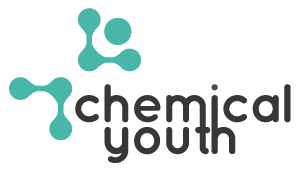Wikipedia has developed into a source of knowledge in recent years that challenges traditional encyclopediae. It was founded in 2001, and contains today more than 40 million articles in almost 300 languages. The platform is based on the principle of open knowledge: everyone can read the articles, and everyone can contribute knowledge. In reality, however, most Wikipedia value is produced by dominant groups of editors: 40% of Wikipedia’s content is contributed by roughly 0.1% of the editors (Priedhorsky et al, 2007). At the same time, Wikipedia’s policies push for scientific sources, in order to provide the most reliable knowledge (Jimmy Wales, 2014).
In the ChemicalYouth research group at the University of Amsterdam, we wondered how these trends, the elite of editors, and the formalization of sources in Wikipedia, are expressed in articles about psychoactive and designer drugs. We are interested in drugs which are located at the fringes of the biomedical life sciences, such as Ayahuasca and LSD, and in substances which are newly created by communities of hobby chemists and so-called psychonauts. Information about such substances is often located in grey literature and created through non-experimental research.
During a data sprint between 11-15th July 2016, we gathered anthropologists, digital media scholar, statistician Louis Dijkstra and designers in order to explore two questions:
-
How does knowledge about risks and potential benefits of drugs travel in Wikipedia?
-
How is knowledge about (new) designer drugs established?
We focused our explorations on two different sets of substances:
- a set of rather well-known psychoactive substances, which are controversially discussed in terms of their risks and potential benefits, and
- a set of roughly 500 designer drugs, psychoactive substances about most of which relatively little knowledge is established.
Matteo Azzi, Lisa Krieg, Gabriele Colombo, Moritz Berning, Giorgio Uboldi, Louis Dijkstra, Natalia Sanchez-Querubin, Aleksi Hupli, Anita Hardon. (2017, January 5). Chemical knowledge. github.com/calibro/chemical-wiki. Zenodo. http://doi.org/10.5281/zenodo.231035
disclaimer
The maps in this website are not perfect. The protocols and the methodologies we used to extract, analyse and display the information from Wikipedia are still highly experimental. Though imperfect and tentative, we hope that our visualizations will still be useful for the researchers and the actors interested in understanding how the knowledge of psychedelics and designer drugs has been established and stabilized on Wikipedia. To report errors or request information, write to us at info@chemicalyouth.org
The project, funded by the Chemical Youth initiative, has been conceived, designed and developed by a multidisciplinary team composed by:
anthropologists
- Lisa Krieg. Department of Anthropology, University of Amsterdam. Coordinated the project, was responsible for the larger framework and the connection between theory, methods, and results.
- Moritz Berning. Department of Anthropology, University of Amsterdam. Provided anthropological knowledge about the online drug scene and worked on interpreting and contextualizing results.
- Aleksi Hupli. Department of Anthropology, University of Amsterdam. Worked on a qualitative analysis of the discussion surrounding the title of the MDMA article.
designers and developers
- Matteo Azzi. Calibro. Initiated the project, worked on translating questions into methods, data colletcions, and on the production of the visualizations. Developer of the web visual report.
- Giorgio Uboldi. Calibro. Worked on translating questions into methods, and on the production of the visualizations. UI/UX responsible of the web visual report.
- Gabriele Colombo. DensityDesign Lab, Politecnico di Milano. Worked on translating questions into methods, and on the production of the visualizations.
digital media scholar
- Natalia Sanchez Querubin. MRA Media Studies, University of Amsterdam. Coordinated the sub-project of the temporal dynamics of knowledge sources and references in articles.
statistician
- Louis Dijkstra. Faculty of Science, University of Amsterdam. Provided statistical background knowledge, worked on data collection and the implementation of methods.
The project has been supervised by Anita Hardon programme leader of the Chemical Youth project (ERC funded)


